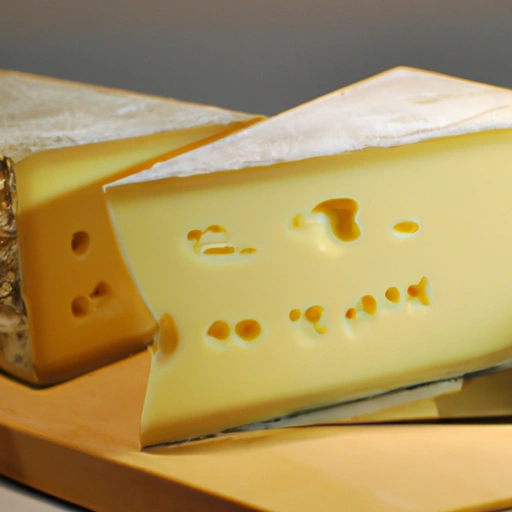Gruyère
Description

Gruyère is a type of Swiss cheese that is beloved for its rich, creamy flavor and smooth, slightly grainy texture. Made from cow's milk, it is named after the town of Gruyères in Switzerland. This cheese is aged for different durations to create variations in flavor and texture, ranging from sweet and nutty in younger Gruyères to more assertive and complex notes in aged varieties.
Common uses
Gruyère is frequently used as a melting cheese in various dishes, from croissants and quiches to French onion soup and classic fondue. Its versatility also makes it a popular choice for sandwiches, cheese boards, and gratins. In baking, it can add a savory note to breads and pastries.
Nutritional value
Calories
In a typical serving of 1 oz (28g), Gruyère provides approximately 117 kcal (489 kJ).
Protein
Gruyère is rich in protein, offering about 8.5 g per 1 oz (28g) serving.
Fat
This cheese contains roughly 9 g of fat per 1 oz (28g), which includes saturated fats essential for flavor and texture.
Carbohydrates
Gruyère is low in carbohydrates, with less than 1 g per 1 oz (28g) serving.
Vitamins
Gruyère cheese is a good source of B-vitamins, particularly B12, vital for nerve function and metabolism.
Minerals
It is rich in minerals like calcium, essential for bone health, with about 287 mg per 1 oz (28g), and also provides phosphorus, zinc, and selenium.
Health benefits
Gruyère cheese's high calcium and protein content supports bone health and muscle maintenance. The presence of B-vitamins aids in metabolic functions while the minerals found in Gruyère play a role in various physiological processes.
Potential risks
Due to its high-fat content, Gruyère should be consumed in moderation. Individuals with lactose intolerance or dairy allergies should avoid Gruyère. Overconsumption might lead to weight gain and increase the risk of heart disease.
Common recipes
Gruyère is featured in many classic recipes such as Croque Monsieur, French onion soup, and Swiss fondue. It is also a key ingredient in the traditional Swiss dish Rösti.
Cooking methods
It melts beautifully and can be used in baked dishes, sauces, and gratins. Gruyère can also be enjoyed raw, sliced, or grated over salads and entrees.
Pairing with other ingredients
Gruyère pairs well with fruits like apples and pears, nuts such as walnuts and almonds, and is complemented by a variety of wines, particularly white wines like Chardonnay or light reds like Pinot Noir.
Summary
Gruyère cheese is a versatile and flavorful ingredient that adds a touch of Swiss tradition to any dish. Its complex taste profile ranges from sweet to nutty and can be enjoyed in a myriad of culinary applications. While it is nutritious and rich in essential vitamins and minerals, Gruyère should be consumed in moderation due to its fat content. Whether used in cooking or savored on its own, Gruyère is a delightful addition to any food lover's repertoire.